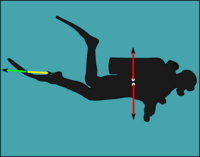Human factors in diving equipment design

When people go diving, they need special equipment to help them breathe and move around underwater. But it's important that the equipment is designed in a way that makes it easy and safe for people to use. This is where something called "human factors" comes in.
Human factors means thinking about how people interact with machines and tools, and designing them in a way that suits the people who will be using them. For diving equipment, this means considering things like:
- How easy the equipment is to put on and take off
- Whether it's comfortable to wear for long periods of time
- How well it fits different body types and sizes
- Whether the controls and displays are easy to understand and use, even when someone is underwater and wearing gloves or a hood
- How much effort it takes to move around and use the equipment, especially if it's heavy or bulky
- Whether there are any risks or hazards associated with using the equipment, and how these can be minimized
Designers of diving equipment need to think about all of these factors and more, to make sure that the equipment is as safe and user-friendly as possible. They might test different designs with divers to see how they work in practice, and make adjustments based on feedback.
Ultimately, good human factors design can help make diving a safer and more enjoyable activity for everyone involved.
Human factors means thinking about how people interact with machines and tools, and designing them in a way that suits the people who will be using them. For diving equipment, this means considering things like:
- How easy the equipment is to put on and take off
- Whether it's comfortable to wear for long periods of time
- How well it fits different body types and sizes
- Whether the controls and displays are easy to understand and use, even when someone is underwater and wearing gloves or a hood
- How much effort it takes to move around and use the equipment, especially if it's heavy or bulky
- Whether there are any risks or hazards associated with using the equipment, and how these can be minimized
Designers of diving equipment need to think about all of these factors and more, to make sure that the equipment is as safe and user-friendly as possible. They might test different designs with divers to see how they work in practice, and make adjustments based on feedback.
Ultimately, good human factors design can help make diving a safer and more enjoyable activity for everyone involved.
Related topics others have asked about:
